The new line of darker-skinned Barbie BFFs may be a vast improvement over Mattel’s notorious “Colored Francie” of the 1960’s or the inexplicable “Oreo Fun Barbie” of 1997, but they’re still not quite Michelle Obama.
“It’s a step in the right direction. I love that they have different skin tones,” said Shellene Drakes-Tull, marketing communications director of Black Pearls Community Services, a group of greater Toronto young Black women that runs community and mentoring programs for Black women and girls.
“Who knows? The next time around, they might be more representative of all of the different types of Black people.”
Designed by Stacey McBride-Irby, Grace, Trichelle and Kara differ from the original Barbie and her many family and friends because of their broader noses, higher cheekbones, fuller lips, three “little sisters” and “aspirational” back stories.
“This is something Mattel needed to do”, said McBride-Irby, who was inspired by watching her now 6-year-old daughter play with her Barbie.
“I wanted to be true to the girls and their moms in my community,” said McBride-Irby, who has designed dolls for Mattel for 12 years. “I made sure they had a fuller nose and fuller lips. I was answering my community’s needs.”
And this time, they’ve also got a powerful marketing campaign behind them.
Next season, McBridge-Irby will deliver an even darker-skinned Barbie BFF called Sandra to increase the “diversity.”
Barbie has had a Black friend, Christie, since 1968. The first collector Black Barbies turned up in the 1980’s, looking identical to the alabaster-skinned originals. Barbie acquired three Black friends briefly in the early 1990s, the “Shani” dolls that supposedly looked more “ethnic.”
The new “little sisters” are designed to inspire Black teens to mentor younger girls, either their own sisters or in the community, McBride-Irby said. Each doll also matches an academic side “that moms can hone in on” with her fun side; Kara, for example, is into “math and music.” But it’s the hair that needs work. The dolls have “Beyonce-looking” long hair that can be curled and styled, said Drakes-Tull. Some short, curly Afros would have been encouraging, she said.
Focus groups persuaded McBride-Irby to curl Trichelle’s hair, she told The Star Thursday in an interview from California.”As far as the hair, I wanted to create dolls little girls would play with. They couldn’t have as much fun playing with an Afro.”Drakes-Tull agrees that’s true, although felt some imagination and authenticity could have produced a Barbie BFF with a wardrobe of hair extensions to play with. “There is a lot of politics around hair and accepting the way it is” for Black women, Drakes-Tull said.
The new “So In Style” line isn’t available in Canada, although a Mattel spokesperson said it might arrive in eight weeks or so. Toys R Us were unable to say when they might be sold here. Barbie collector Margaret Matsui intends to bring them in herself, though, because she’s spotted a surge of interest in Black dolls. “This is the year colour has disappeared” in dolls, said Matsui, who operates My Favourite Dolls in Mississauga. The collector Black Barbies with their neon wardrobes from the 1980’s have been “my best-selling doll this year,” she said, and the new Black line “is something significant that is going to go down in Barbie history.
“People love them. They like the Black face sculpting over the white ones. Or they say, ‘This doll is so pretty.’ They’re not seeing black and white anymore.” She and Drakes-Tull are ready to cut Mattel some slack, just for trying. “You can’t make everyone happy,” said Matsui. “It’s hard to encapsulate all Black people in three dolls,” said Drakes-Tull.
Black Barbie: Vogue Italian Style
Everybody’s talking about Barbie this year, everybody’s celebrating one way or the other. But how about Black Barbies? Shouldn’t we celebrate them too? Good thing Franca Sozzani (Vogue Italy supreme editor) thought about them and highlighted the Black Barbie in a special Barbie Issue supplement to the Vogue July with McMenamt the Legend.
Just looking at those marvelous models, I feel the urge to run out the door and buy me some Barbies! (it’s tough to get a house literally full with boys toys to become Barbie friendly, but not if I have something to say about it!) Just look at them sitting on those couches and teaching us how to really present lingerie! Beautiful!
This year, fashion celebrates Barbie’s 50th anniversary. So how many anniversaries do we have to count for the Black Barbies? The first Black Barbie was given to us in 1980 (the first Black doll from Barbie was actually introduced in 1967 and was called Black Francie) and this year, a new Black Barbie (limited edition) was introduced by Mattel. Called So In Style, S.I.S, the new Black Barbies have more accurate facial characteristics (wider nose, more prominent cheek bones and significantly curly, frizzy hair). Ignoring the limited edition downer, I wish I could get my hands on one of those Black beauties! Ahem Barbies!
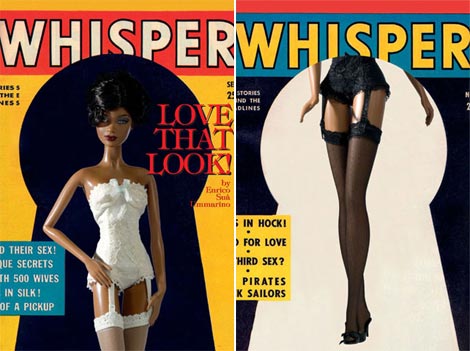
Italian Vogue celebrated Black Barbie in their July 2009 Barbie Issue. Last year’s Black Issue was so impressive and successful that they somewhat reinterpreted it by including Black barbies in this collector’s edition! Here are a few photo’s from the issue.
Sources: Parentcental.ca, Style Frizz and T.E.E.N Diaries


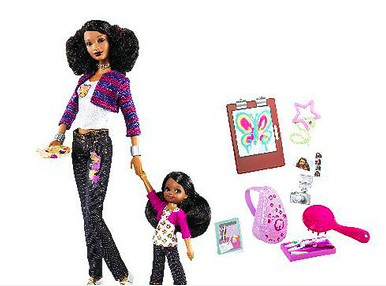
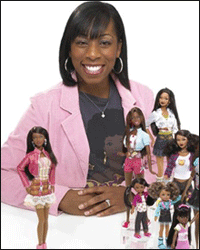
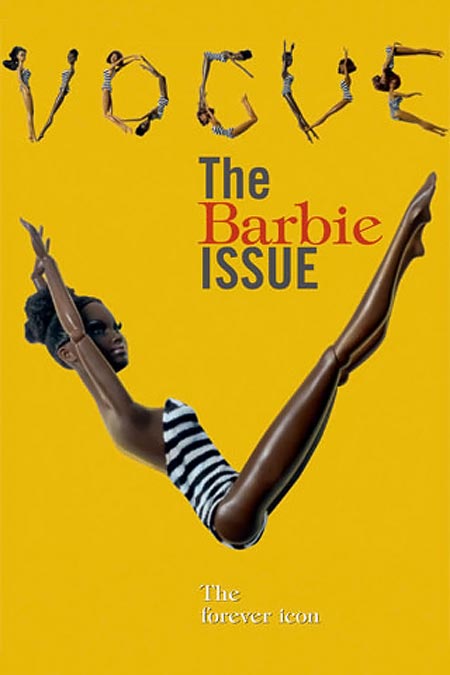
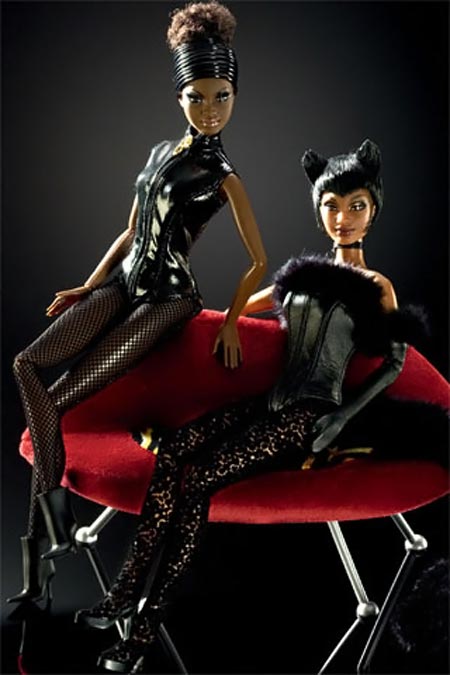
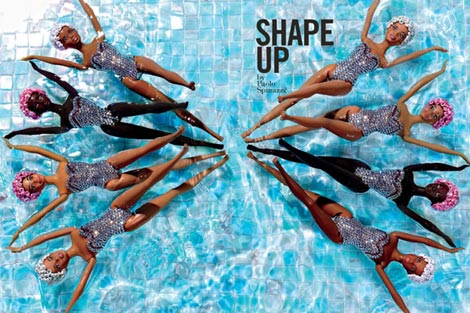
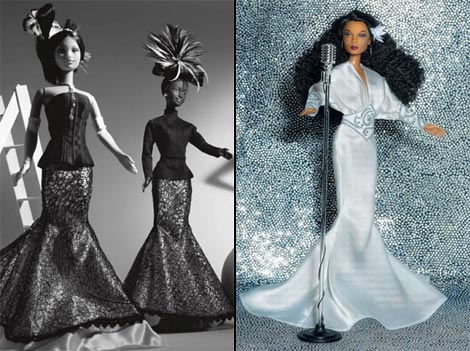

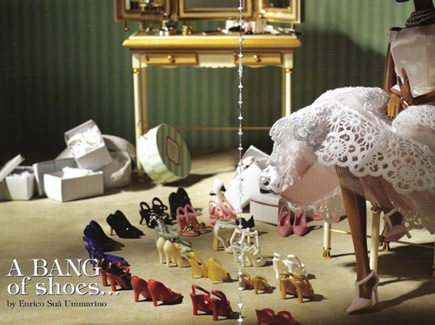
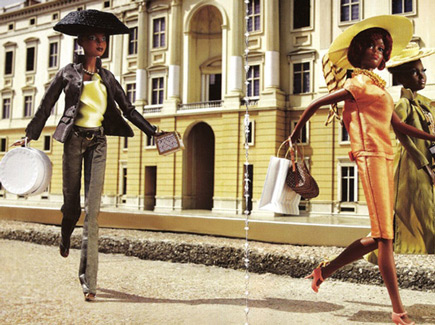
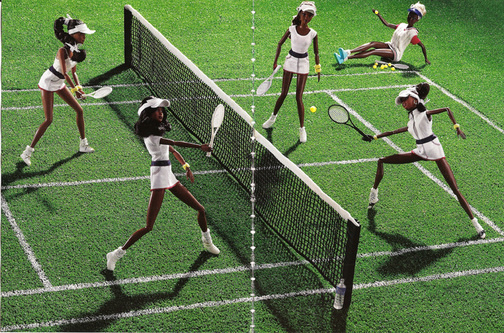
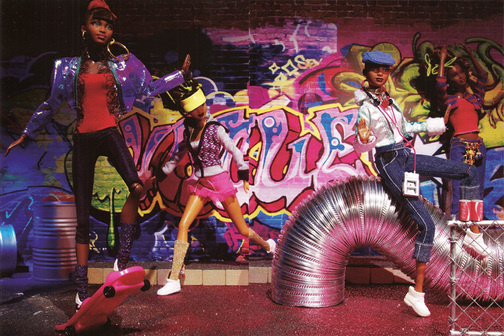
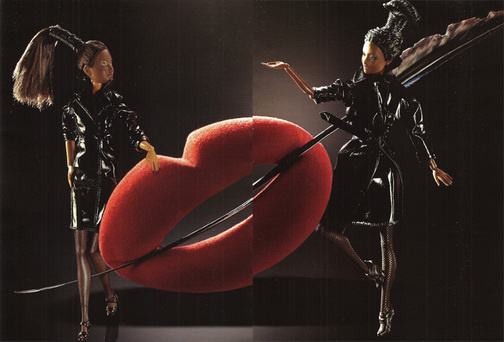


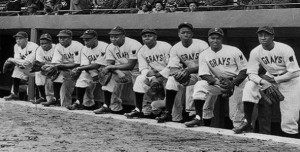

2 Comments
Please don’t rag too much on “Colored Francie”. Her name doesn’t sound very progressive now, but she was groundbreaking in her day, (beating both the Christie and Julia dolls to toy store shelves) and was very, very sweet. She still is sweet. I and plenty of collectors cherish black Francies to this day, and love the variations in hair color that time has given some of them.
And, for the record, Mattel dolls may or may not accurately reflect African American “ethnicity”, but they are no worse or better at it than they are at accurately reflecting Caucasian females. No white girl REALLY looks like a white Barbie. No matter the skin tone, Barbie and her very extended family of dolls reflect a stylized, idealized fantasy of the female face and form. Like any toy (they ARE children’s toys, after all, first and foremost), they are designed to feature cuteness, fun, and play value, not what’s the most clinically, tediously, politically accurate.
I too am a doll collector, and in the “vintage” category, I adore Barbies issued from 1959 to 1967. However, I disagree with “stylite,” below on how one shouldn’t “rag too much on ‘Colored Francie.'” Why? The word “colored” was not a word invented by Blacks to describe themselves but, rather, forced upon them via white supremacy until many of them colluded with the fearful hatas into self-hatred. Having said that, I can’t even afford a vintage Black Francie in excellent condition, currently fetching upward of $1,400.00
One of my grandmothers continued to use “colored” even when “Negro” was in vogue, and it took nearly until she died twenty years ago to enunciate “Black,” which she managed with much hesitation. I never dug hearing her refer to herself as “colored,” any more than hearing her refer to her hair as “good hair.” My love for her made me feel pain whenever she would use those (and other words) to describe herself, while my respect for her as my ancestor prevented me from expressing to her what I felt about those pejorative terms.
Don’t get me started on “African American,” a description about which I remain conflicted. Back in the late 1980s through the 1990s, more than a handful of men and women born and raised on the Mother Continent chided me and other for referring to ourselves as “African Americans” because, they said, THEY were African Americans. They didn’t buy my argument that those Black people descended from enslaved Africans brought — in brutality — to, and bought and sold in, the American South and North are truly African American in a historically collective sense. In fact, one Ghanaian-born woman rolled her eyes at me like a slot reel when I explained that, for example, a person from Ghana who becomes naturalized in the United States is an African American but technically a Ghanaian American. Meanwhile, a Zimbabwean co-worker (R.I.P., Farai) clicked at me and said he was more African American than I.
Yet I’ve never heard Italian Americans, French Americans, German Americans, Polish Americans, etc., referring to themselves as European Americans in casual conversation. Even when born in the U.S. and several generations removed from an ancestor (or ancestors) born in Italy, an Italian American may say he or she is Italian. Or if there’s Italian and Irish heritage, a white American may say he or she is Italian Irish or Irish Italian. However, with many (though not most) Black Americans, we don’t know with definitiveness what country or which countries on the African continent birthed our ancestors, so in that sense the term “African American” can be seen as respectful and unifying.
Nevertheless, my dad used to say when I taunted him by saying, “So Daddy, you’re an African American”: “I ain’t no African. I was born in America, and that makes me American.” He was born and raised — and survived — the Deep South when Jim Crow was law. (That was at a time when my aforementioned, and high-toned, grandmother from my matriarchal side had fled the not-so-deep South to join the Harlem Renaissance. She went from hiding her “good hair” (her term, not mine) beneath a kerchief to showing it off beneath velvet cloques and fascinators. This was a woman who told me she “couldn’t stand” the now-legendary singer-songwriter Billie Holiday because she believed that all the artist’s substance-abusing — no matter the reasons — brought down the collective dignity of “colored people.” Ahhh, the irony.) But my father, to this day, refers to himself as a Black man, as a Black American man and as an American man. Never, never has he referred to himself — since I’ve been alive — as a “colored” or a “Negro.” I would like to believe that he doesn’t care for the term “African American” because it qualifies his Americanness as something lesser than.
It’s all subjective, when you get down to it. I’ll always squish out “colored” like a pair of vintage Black Francie’s red shoes. But I’ll always bet on “Black.”